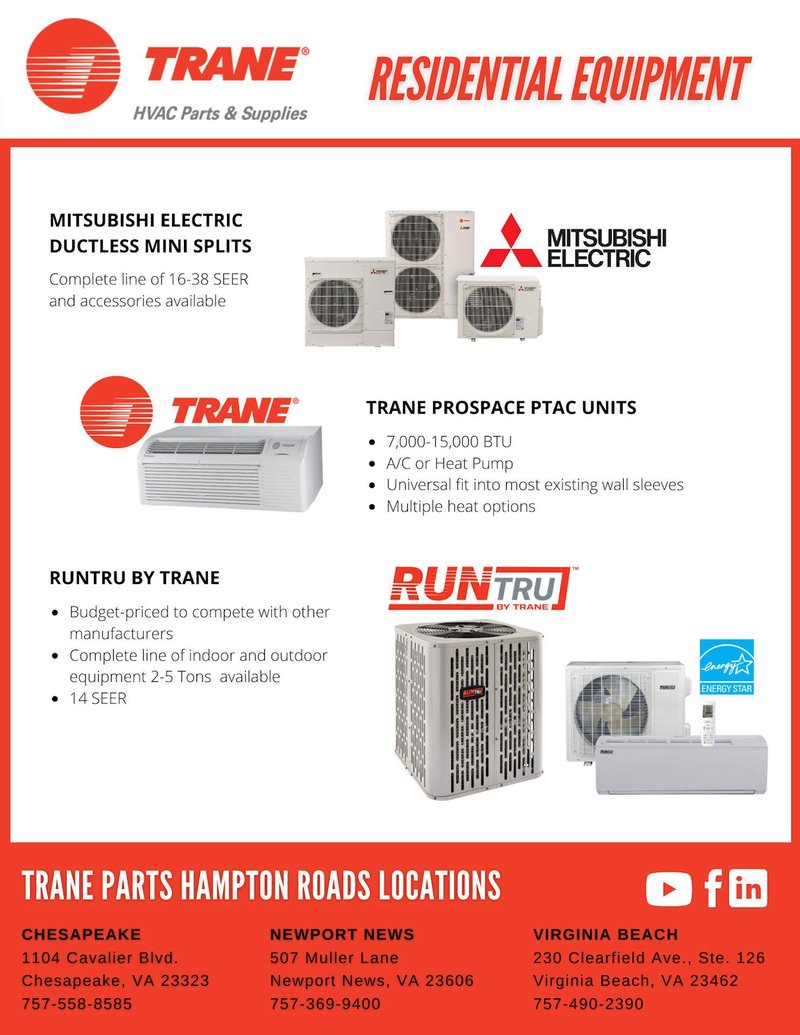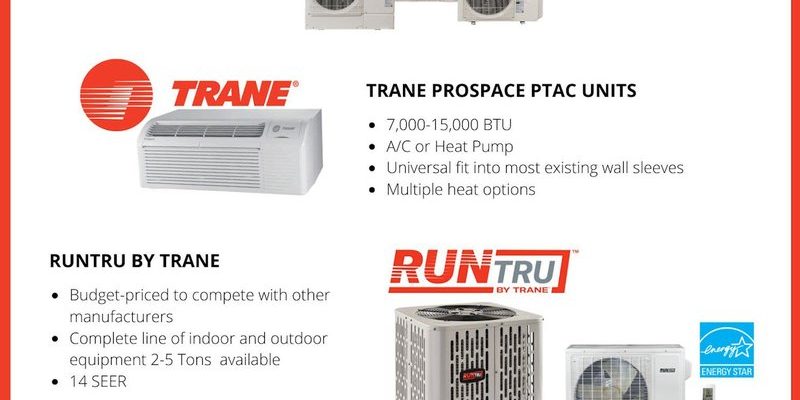
Now, I get it—paperwork isn’t exactly thrilling. It can feel like setting up a new phone: you just want it to work, but there are those few setup steps that make everything smoother in the long run. Registering your Trane HVAC system works the same way. It’s not just about ticking a box; it unlocks important benefits, makes warranty claims easier, and can save you headaches if you ever need support or troubleshooting.
So, let’s break down what info you actually need to register your Trane system, why each piece matters, and how to get it all sorted—no sweat, no jargon, no stress.
Why Registering Your Trane HVAC System Matters
Let me explain why this step isn’t just another boring formality. When you register your Trane HVAC system, you’re essentially syncing up with Trane’s support network. This isn’t just a “nice to have”—it can save you serious time and money if anything ever goes wrong with your unit.
Here’s the thing: registered systems usually get extra warranty coverage (sometimes up to ten years, compared to just five if you skip registration). That extra coverage can be a lifesaver if you ever need a replacement part or technician visit. Plus, registering your product makes it much easier to troubleshoot problems down the road, since Trane will have your serial number, model info, and install details right on file.
If you ever need to reset, pair, or even replace a remote, having a registered unit smooths the whole process. Trane’s support team can quickly look up your code, sync details, and service history, helping you get back to comfort faster. Basically, registration isn’t just helpful—it’s a smart move.
The Most Important Info You’ll Need to Register
You might be wondering, “What exactly do I need to have on hand?” Good news: it’s not a mountain of paperwork. Most of the info is probably already in your hands—or on your unit. But some details can be easy to overlook, so let’s walk through them.
- Product Serial Number: This is the unique code that identifies your specific Trane unit. You’ll usually find it on a sticker or plate attached to the side or back of your system. It’s kind of like your system’s fingerprint—no two are quite alike.
- Model Number: Not to be confused with the serial number, the model number tells Trane exactly what kind of system you have. Think of it as the make and model of your car—it helps the company pull up all the right specs, manuals, and troubleshooting info for your particular unit.
- Date of Installation: This tells Trane when your system went live. It’s important for warranty purposes, since coverage usually starts from the install date (not the purchase date!). If you don’t know this offhand, your installer can help.
- Installing Dealer or Contractor Info: Was your system installed by a local HVAC pro? You’ll want their business name and contact info. This helps Trane coordinate if there’s a future repair, reset, or warranty claim. Bonus: it can also speed up battery replacement or remote pairing, since your original installer knows your setup best.
- Your Contact Information: Name, address, phone, and email—nothing fancy, just so Trane can reach you with updates or confirm your registration.
Honestly, once you have these bits handy, the actual registration won’t take more than ten minutes.
Where to Find Your Trane Serial and Model Numbers
If you’re staring at your HVAC unit thinking, “Now where on earth are those numbers?”—don’t worry, you’re not alone. These details are vital for registration, code sync, and even routine troubleshooting, but manufacturers don’t always make them obvious.
Here’s where to look:
- For most Trane air conditioners, furnaces, and heat pumps, the serial and model numbers are printed on a label or data plate. This is usually located on the side or rear of the outdoor unit, or inside the front service panel for indoor systems.
- The serial number is often a long string of numbers and letters—something like “15284N5N4G.” The model number may look similar, but it usually starts with the letters “T,” “X,” or “Y” (like “TUD080R9V3K”).
- If your system came with an owner’s manual or installation paperwork, there’s a good chance these numbers are written there too—sometimes even as a removable card.
Don’t stress if you can’t find the numbers right away. Take a flashlight, snap a photo, or even jot the details down on your phone—whatever makes the process easier for you.
Step-By-Step: How to Register Your Trane HVAC System Online
Ready to get this done? Here’s how the Trane registration process usually works, whether you’re registering an air conditioner, furnace, or a whole smart home system:
- Head to the official Trane website. There’s a Product Registration page made just for this.
- Enter your serial number and model number. Double-check these to avoid typos—accuracy matters for syncing warranty and support details.
- Fill in your installation date and contractor or dealer info. Don’t have all the details? Contact your installer—they should have records on file.
- Add your personal contact information—again, so Trane can reach you if necessary for troubleshooting, reset requests, or support questions.
- Review everything to make sure it’s accurate, then hit submit. You’ll get a confirmation email (sometimes with a registration code or reference number to keep for your records).
Here’s the thing: Trane’s system is built for homeowners, not HVAC pros. So the forms are straightforward, and you don’t need technical know-how. If you run into any issues—like the site not accepting your serial number, or you’re seeing sync errors—Trane has a support line and live web chat to walk you through the process.
What If You Don’t Register? Downsides and Alternatives
You might be tempted to skip registration, especially if you’re short on time or just don’t want to mess with it. But let me be real: skipping this step can bite you later. Without registration, your Trane HVAC system only gets the base warranty—usually five years. Register, and you’ll get up to ten years of parts coverage. That difference matters when you’re staring at a repair bill down the road.
There are alternatives if you forgot to register right after installation. Some dealers can submit the form for you if you call them within a certain window (usually within 60 days). If your unit is already past that deadline, you might not get the extended warranty, but you should still keep your purchase and installation info handy. It’ll help with any troubleshooting, code lookups, or service needs—even if the warranty’s shorter.
It’s kind of like buying a phone and skipping the warranty—it works fine until it doesn’t, and that’s when you’ll wish you’d filled out the form.
Common Problems and What To Do Next
It’s not uncommon to hit a snag during Trane HVAC registration. Maybe you typed in a serial number and the system says it’s not valid, or you don’t remember your installation date. Here’s what you can do:
- Serial Number Not Accepted: Double-check every digit and letter. Sometimes zeros and the letter “O” get mixed up. If it still won’t work, call Trane support—they can look it up by your model or dealer info.
- No Installer Info: If it was a DIY job, just enter your own details. If you bought the home with the system already installed, try to find any paperwork left by the previous owner or ask your realtor.
- Missed the Registration Deadline: Register anyway—it might still be accepted, especially if you call support directly. Some leeway is common.
- Didn’t Get a Confirmation Email: Check your spam folder first. If you really don’t see one, print or screenshot your submission confirmation page just in case you need to reference it later.
Honestly, most registration hiccups are fixable—Trane wants your info on file almost as much as you do.
How Registration Affects Remotes, Sync, and Support
Here’s something people rarely think about: registering your system can really make things easier if you ever need to reset, sync, or pair a replacement remote. Trane support uses your registration info to pull up the right codes and procedures for your exact unit.
If you ever have trouble syncing a remote, replacing a lost battery, or need a system reset after a power outage, a registered system lets Trane guide you step-by-step. Their reps can quickly look up which remote model you need, help you with troubleshooting if it won’t pair, or provide instructions tailored to your system’s version.
Imagine calling for help and skipping the twenty questions about your model and install date—they already know, so you get answers faster.
If you’re thinking about using a universal remote for your Trane system, registration still helps. The support team can tell you which universal models are compatible and provide the right programming codes. For brand-specific remotes, having your system registered means you can order a replacement without tracking down a ton of paperwork.
Final Thoughts: Make Registration Easy for Yourself
Registering your Trane HVAC system might feel like a chore, but it’s honestly one of the best things you can do to protect your investment and make your life easier down the road. Gather your serial and model numbers, jot down your installation details, and carve out ten minutes for the online form. Whether you need to troubleshoot, pair a new remote, or file a warranty claim, having your info squared away puts you miles ahead.
So, next time you walk past your cool, quiet Trane system, give yourself a pat on the back—you’ve set yourself up for years of comfortable, worry-free living (and a much smoother experience if you ever need support). Registration might not be glamorous, but it sure does pay off.
